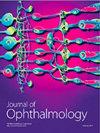2006 年至 2020 年匈牙利一家三级眼科中心的眼内晶体爆破适应症和结果
IF 1.8
4区 医学
Q3 OPHTHALMOLOGY
引用次数: 0
摘要
研究目的我们的研究旨在评估匈牙利一家三级眼科中心的眼内晶状体(IOL)置换手术的适应症和结果。材料和方法。这项回顾性研究包括匈牙利布达佩斯塞梅尔维斯大学眼科系在 2006 年至 2020 年期间进行的所有人工晶体置换手术。本研究没有排除标准。研究人员审查了每位患者的人口统计学特征、临床病史、术前状态、人工晶体置换适应症以及手术和术后详情。主要结果包括晶体摘除适应症和二次植入人工晶体的类型。结果。共纳入了 153 名患者的 161 只眼睛(96 名男性;62.7%);人工晶体取出时的年龄为 65.0 ± 17.4 岁。初次白内障手术与人工晶体取出手术之间的平均间隔时间为(8.5 ± 7.7)年。共有 139 个(86.3%)PCIOL 和 22 个(13.7%)ACIOL 被摘除。在 PCIOL 组中,人工晶体摘除的主要适应症是脱位(133 个;95.7%)和屈光原因(2 个;1.4%)。在 ACIOL 取出手术中,主要原因是假性角膜牛皮癣(14 例;63.6%)、脱位(4 例;18.2%)和屈光原因(2 例;9.1%)。在 PCIOL 组中,115 个(82.7%)主要人工晶体植入囊袋,16 个(11.5%)植入沟固定,8 个(5.8%)植入巩膜固定。最常见的眼部合并症是既往玻璃体切除术(50 例,31.1%)、既往眼外伤(45 例,28.0%)、青光眼(16 例,9.9%)、假性角膜剥脱综合征(15 例,9.3%)和高度轴性近视(14 例,8.7%)。最常用的二次人工晶体植入是瞳孔前虹膜爪人工晶体(115 例,73.7%),其次是瞳孔后虹膜爪人工晶体(32 例,20.5%)。在所有样本中,更换人工晶体后未矫正视力(UCVA)明显提高(1.57 ± 0.61(范围:2.40-0.05)对 0.77 ± 0.56(范围:2.40-0.00);)。80.7%的病例在人工晶体置换后保持或提高了最佳矫正视力(BCVA)。结论在匈牙利的一家三级眼科中心,人工晶体置换术最常见的适应症是人工晶体脱位,其次是假性角膜牛皮癣。瞳孔前和瞳孔后虹膜爪式人工晶体是最常用的二次植入物,使用它们可在人工晶体置换后显著改善UCVA。本文章由计算机程序翻译,如有差异,请以英文原文为准。
Indications and Outcomes of Intraocular Lens Explantation in a Tertiary Eyecare Center in Hungary between 2006 and 2020
Purpose. Our study aimed to evaluate the indications and outcomes of intraocular lens (IOL) explantation surgeries in a tertiary eyecare center in Hungary. Materials and Methods. This retrospective study included all IOL explantation surgeries performed between 2006 and 2020 at the Department of Ophthalmology of Semmelweis University, Budapest, Hungary. There were no exclusion criteria for this study. For each patient, the demographics, clinical history, preoperative status, indications for IOL explantation, and operative and postoperative details were reviewed. Primary outcomes included explantation indications and the type of secondary implanted IOL. Results. A total of 161 eyes from 153 patients were included (96 males; 62.7%); age at the time of the IOL explantation was 65.0 ± 17.4 years. The mean time between primary cataract surgery and IOL explantation was 8.5 ± 7.7 years. In total, 139 (86.3%) PCIOLs and 22 (13.7%) ACIOLs were explanted. The main indications for IOL explantation were dislocation (n = 133; 95.7%) and refractive cause (n = 2; 1.4%) in the PCIOL group. Among ACIOL explantations, the main reasons were pseudophakic bullous keratopathy (n = 14; 63.6%), dislocation (n = 4; 18.2%), and refractive cause (n = 2; 9.1%). In the PCIOL group, 115 (82.7%) primary IOLs were implanted in the capsular bag, 16 (11.5%) were sulcus fixated, and 8 (5.8%) were scleral fixated. The most frequent ocular comorbidities were previous vitrectomy (n = 50, 31.1%), previous ocular trauma (n = 45, 28.0%), glaucoma (n = 16, 9.9%), pseudoexfoliation syndrome (n = 15, 9.3%), and high axial myopia (n = 14, 8.7%). The most commonly used secondary IOL implant was the prepupillary iris-claw IOL (n = 115, 73.7%), followed by the retropupillary iris-claw IOL (n = 32, 20.5%). Uncorrected visual acuity (UCVA) was significantly better following IOL exchange in the entire sample (1.57 ± 0.61 (range: 2.40–0.05) vs. 0.77 ± 0.56 (range: 2.40–0.00); ). Best-corrected visual acuity (BCVA) was maintained or improved in 80.7% of cases after IOL explantation. Conclusions. The most common indication for IOL explantation at a tertiary eyecare center in Hungary is IOL dislocation, followed by pseudophakic bullous keratopathy. Prepupillary and retropupillary iris-claw IOL are the most frequently used secondary implants and their use resulted in a significant UCVA improvement following IOL exchange.
求助全文
通过发布文献求助,成功后即可免费获取论文全文。
去求助
来源期刊

Journal of Ophthalmology
MEDICINE, RESEARCH & EXPERIMENTAL-OPHTHALMOLOGY
CiteScore
4.30
自引率
5.30%
发文量
194
审稿时长
6-12 weeks
期刊介绍:
Journal of Ophthalmology is a peer-reviewed, Open Access journal that publishes original research articles, review articles, and clinical studies related to the anatomy, physiology and diseases of the eye. Submissions should focus on new diagnostic and surgical techniques, instrument and therapy updates, as well as clinical trials and research findings.
 求助内容:
求助内容: 应助结果提醒方式:
应助结果提醒方式:


